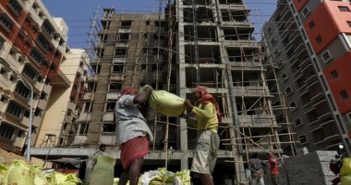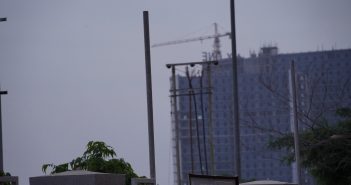
Which are top cities for real estate investments?
Track2Realty picks up Investment Magnet Cities of India through a comprehensive pan-India survey. The idea is to identify the top real estate destinations for the home buyers in the country.

Track2Realty picks up Investment Magnet Cities of India through a comprehensive pan-India survey. The idea is to identify the top real estate destinations for the home buyers in the country.

Track2Realty has in its possession various exchanged mails between the buyers and the builders which not only defies any civilized business correspondence but is also in contravention with the law of the land. In one such mail with a delayed project for more than three years, the builder has the audacity to put on record that they would refund only with some deductions, forget about delayed penalty. Incidentally, the builder has accepted unaccounted cash with the said buyer and hence the buyer knows the real fallout of the exit.

In the late 2010, buyers were largely in the age groups of 35-45 years and 45-55 years, but the share of homebuyers in the 25-35 years age group was minimal. However, improved tax benefits motivated more working youths in this age bracket to opt for home loans. Millennials predominantly favoured paying EMIs for buying a home over the ‘dead’ expense of rentals.

Bengaluru maintains the top position in office space leasing, with a share of 30% in gross leasing during Jan-September 2019. Bengaluru recorded gross absorption of 12.1 million sq feet during Jan-September 2019, a 7% increase from same period last year, as occupiers continue to ramp up. IT-BPM and technology companies together accounted for 36%. Engineering and manufacturing sector’s leasing accounted for 18% share. Occupiers are preleasing space, and even taking up space in refurbished grade B buildings, due to tight vacancies in the market amidst healthy demand. The city’s vacancy stood at 8.8% at the end of Q3 2019.

There is no simple yardstick to calculate the exact number of units and the actual funds that are needed to complete them. Each delayed project is different in size, stage of completion, city and micro-location, etc. Also, various methodologies are used to reach an approximate number. After considering the government’s caveats – non-inclusion of projects under NCLT, and inclusion of mid and affordable units only, ANAROCK has shortlisted units launched in 2013 or before.

Even as India’s middle-class grapples with the prospect of an uncertain future in their careers and financial ability – the main drivers of housing demand – the rise of India’s super-rich continues unabated. According to Credit Suisse report, there were an estimated 3.42 lakh dollar-millionaires in India as on mid-2018 who collectively held around USD 6 trillion. It is forecast that 5.26 lakh Indian dollar millionaires’ wealth will be around USD 8.8 trillion by 2023. Market fluctuations make very little difference to the personal networth of these individuals.

Based on the concept of contemporary design led by Singaporean architecture, ‘Singa – Pune’ is a 21 acre township located at Dhanori, Pune with over 1000 apartments in phase 1. With internationally designed landscape across the project and 51 world-class amenities, the project will truly transcend the engineering and aesthetics of Singapore architecture to the city of Pune. The apartments are priced starting at 13L for Studio Apartments, 22L for 1 BHKs and 30L for 2 BHKs. The project will be completed in three phases and will progress across a span of 60 months.

Sensing the potential of the student housing market, many start-ups have entered the fray. Student housing providers such as Oxfordcaps, Tribestays, PLACIO, Stanza Living, Campus Student Communities, Housr, Simplyguest, etc. currently operate in Delhi, Pune, Bengaluru, Noida, Mumbai, Indore, Dehradun, Ahmedabad and Jaipur. The top 10 players in the organized student housing space collectively operating slightly over 75,000 beds with plans to touch nearly 2 lakh beds by 2020.

Construction for 4.9 million units has begun and 2.6 million units of which have been completed. Given the past trend, additional 1.64 million houses are likely to be sanctioned by December 2019, making it highly possible to achieve the 10 million houses target by 2022. Projected subsidy disbursement over next 3 year for the same is projected to INR 1 trillion.

The reasons for vacancy levels of homes which could feed the rental market across the country are largely region-specific. However, distorted property rights (in the absence of a sound rental policy), weak rental contract implementation and low rental yields are some of the major factors that prompt homeowners to leave their houses vacant rather than rent them out.
